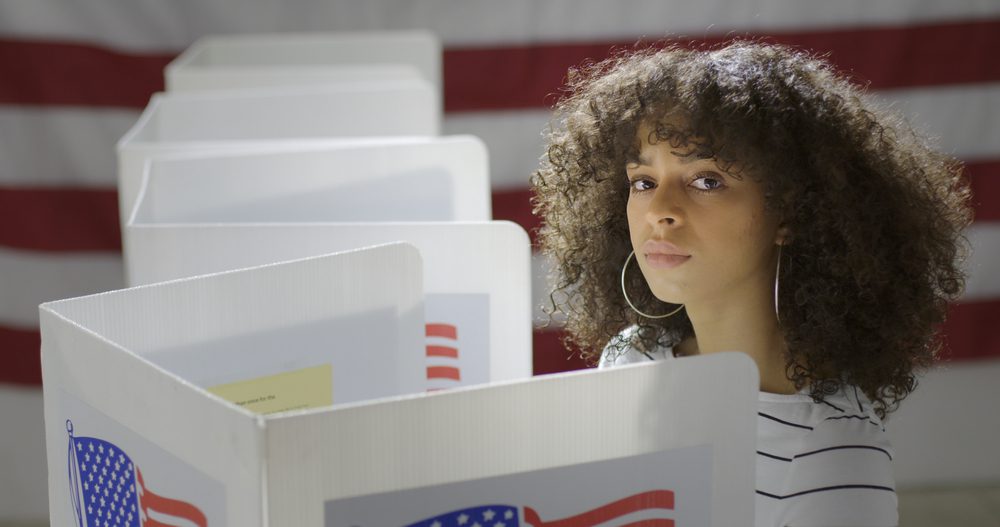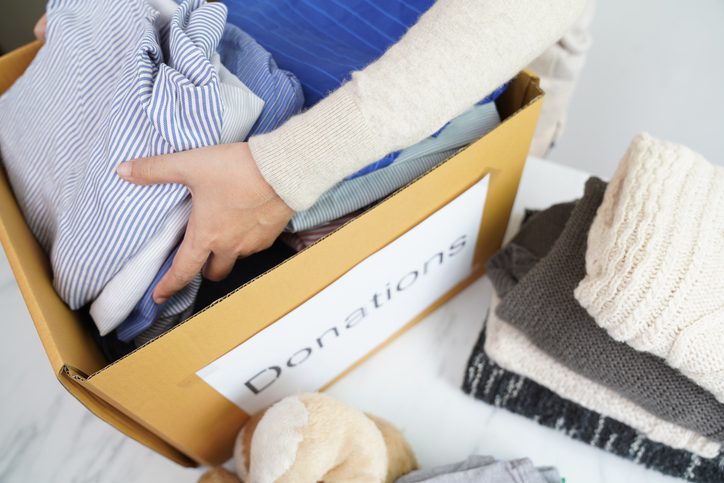
Shutterstock/vesperstock.
If you’re Puerto Rican and voting for the first time in Florida, the process might seem a bit confusing—but we’ve broken down all you need to know about how to vote in Florida.
Check out our voter guide below to review important dates, instructions for registering to vote, info for voting early or by mail, and the basics of how to navigate Election Day. There’s even an FAQ section to address everything you always wanted to know about voting but were too afraid to ask.
Do you qualify?
To vote in Florida, you must be:
- A citizen of the United States
- A Florida resident
- At least 18 years old. (You may pre-register to vote at 16.)
- Not adjudicated mentally incapacitated with respect to voting in Florida or any other state without having the right to vote restored
- Not convicted of a felony without having your voting rights restored
Important dates
Florida’s primary election is Tuesday, Aug. 24, 2024. (You must register by July 22, 2024.)
Florida’s general election is Tuesday, Nov. 5, 2024. (You must register by Oct. 7, 2024.)
Even if you skipped the primary, you can still vote in the general election.
How to register
In order to vote, you must first register. Make sure to review the detailed deadline info below. (And remember the deadline to register is July 22 for the primary and Oct. 7 for the general election.)
- Online with ID: To register online, fill out and submit this application form from the Florida Department of State website. You will be asked to provide two things: 1) a Florida driver’s license or state ID and 2) your Social Security number.
- In-person/by mail: Download, print, and complete this voter registration application form. A Spanish version is available here. You can also find paper versions at your local Supervisor of Elections office. Once complete, return your application in person or by mail to your local Supervisor of Elections, the Division of Elections, any office that issues driver’s licenses, or any voter registration agency below by the deadline below. Local office addresses are listed on the form.
- If you do not have a valid form of ID, you may still be eligible to register to vote. However, you’ll need to provide a form of ID with signature during or soon after voting for your ballot to be counted.
- Register by July 22, 2024 for the 2024 primary election and October 7, 2024 for the 2024 general election. This includes online, in-person, and by-mail voter registration. Florida does NOT allow same-day voter registration.
How to vote
Now that you’re registered, you have some options when it comes to when and how you will vote.
In-person early voting:
Early voting allows voters to vote ahead of time at a polling place, much like they would on Election Day. This differs from absentee voting in that voters physically show up to a polling site, enter a voting booth, and fill out their ballots in person.
Per the Florida Department of State website, “The early voting period must start at least on the 10th day before the election and end on the 3rd day before the election. In addition, supervisors of elections have the option to offer more early voting on the 15th, 14th, 13th, 12th, 11th, or 2nd day before an election.”
To find specific early voting locations, dates, and times in Florida, click here.
Voting absentee/by mail:
All registered Florida voters have the right to vote by mail—you don’t have to provide a reason or prove that you’ll be out of town. Simply preferring to vote by mail is reason enough.
Here’s how to apply for a mail-in ballot:
- Print and complete this application form. Once completed, return your application via mail, fax, as an email attachment, or in-person to your County Supervisor of Elections office. Find your local office contact information here. You may also call and have an office employee help you complete the form by phone.
- Completed applications must be received no later than 5 p.m. on the 12th day before the election. For the 2024 primary election, this means Monday, Aug. 12, 2024. For the 2024 general election, this means Thursday, Oct. 24, 2024.
- Once you have received and filled out your absentee or mail-in ballot, return it by mail or by hand to your local Supervisor of Elections office or place it in a designated dropbox. Find county election office info here.
- Ballots must be received by your county election board office by 7 p.m. on Election Day.
Election day voting:
To vote in person, double check your polling location by visiting the Florida Department of State Website. Your location might be a local church, school, or other community building close to your registered address.
Once at your polling place, get in line and stay in line—even if you’re still in line when the polls technically close, you’ll still be able to vote if you’re in line. As a first-time voter in the state of Florida, you may need to show a photo ID with a signature to vote. If you do not have an ID with signature, you may be eligible to vote using a provisional ballot.
The volunteer worker will hand you your ballot. Take this ballot into an empty voting booth and completely fill out each bubble with the pen provided, both front and back! You’ll then place your ballot into the provided privacy sleeve and head to the tabulation machine, where you’ll simply slide the ballot (not the sleeve) into a slot or other designated ballot return box. That’s it!
Polls open at 7 a.m. and close at 7 p.m. local time.
Again, if you are already in line when polls close, you have the right to vote. Stay in line.
What’s on the ballot
While everyone will select from the same presidential and statewide candidates on Election Day, each district’s ballot will also include local candidates. Do your research before arriving at the polls so you feel prepared to confidently cast your vote. Thankfully, ballot previews exist so voters know exactly what to expect when they arrive at the polls.
To preview your personalized local ballot, head to BallotPedia and enter your information. If available, you’ll be able to access a sample ballot and carefully review each candidate or proposal well ahead of Election Day.
Voter rights, rules, and FAQs
Can I request a ballot in Spanish?
By law, Florida provides language assistance and translation of election-related materials in Spanish pursuant to the Voting Rights Act. Spanish assistance is available through the statewide voter assistance and voter hotlines.
How do I know if my mail-in ballot was received?
You can track your ballot via the Florida Department of State website.
Can I bring my kid with me into the voting booth?
Yes. There are no rules against bringing a child into the voting booth with you. Of course, make sure your child is quiet and respectful as others vote.
Can I take a selfie with my ballot?
No. While Florida voters may use their phones at polling places, ballot selfies aren’t allowed.
What if I make a mistake on my ballot? Can I have a re-do?
Yes, so long as you have not yet submitted your ballot. If voting in-person, simply tell the poll worker that you’d like a new ballot. They will “spoil” your first ballot by tearing it up and providing you with a new one. You cannot, however, request a new ballot once you’ve mailed in an absentee ballot or turned in your in-person ballot to be counted.
Can I wear political gear to the polls?
Wearing buttons, hats, shirts, or other garments advertising your preferred candidates is considered “electioneering,” along with discussing your voting preferences with fellow voters at the polling location. Just don’t do it.
What if the poll workers say I’m not eligible to vote, but I believe I am?
Ask for a provisional ballot. Per the ACLU, all voters are entitled to a provisional ballot, which will require election officials to look into your voter eligibility status after Election Day and count your ballot if you are indeed qualified.
What is voter intimidation?
Voter intimidation is prohibited by federal law and involves the attempted interference with a person’s ability to freely vote. Examples include displaying false signage about voter requirements, impersonating a poll worker to spread false information, and aggressively questioning voters regarding their citizen or voting right status. Most states also have laws against political campaigning within a certain distance of a polling location.
Are you ready to vote? Make sure to check your voter registration status, see who’s on your ballot, and make a voting plan here.
Support Our Cause
Thank you for taking the time to read our work. Before you go, we hope you'll consider supporting our values-driven journalism, which has always strived to make clear what's really at stake for Floridians and our future.
Since day one, our goal here at Floricua has always been to empower people across the state with fact-based news and information. We believe that when people are armed with knowledge about what's happening in their local, state, and federal governments—including who is working on their behalf and who is actively trying to block efforts aimed at improving the daily lives of Florida families—they will be inspired to become civically engaged.


Harris says nation must accept election results while urging supporters to keep fighting
Harris delivered her remarks at Howard University, her alma mater and one of the country's most prominent historically Black schools, in the same...

What happens next? A timeline of the process between voting and inauguration
Here's what happens next, from the moment the last vote was cast to Inauguration Day on Jan. 20, 2025—no conspiracy theories, no unfounded claims,...

5 places in Florida to donate clothes, shoes, and more
Decluttering your home can provide such a satisfying feeling of accomplishment. After sorting through all of your belongings and determining what...

8 Orlando hotels that pack as much fun as the theme parks
With waterslides, family arcades, playgrounds for the kids, and spas for mom and dad, these Orlando hotels will make your vacation unforgettable!...



